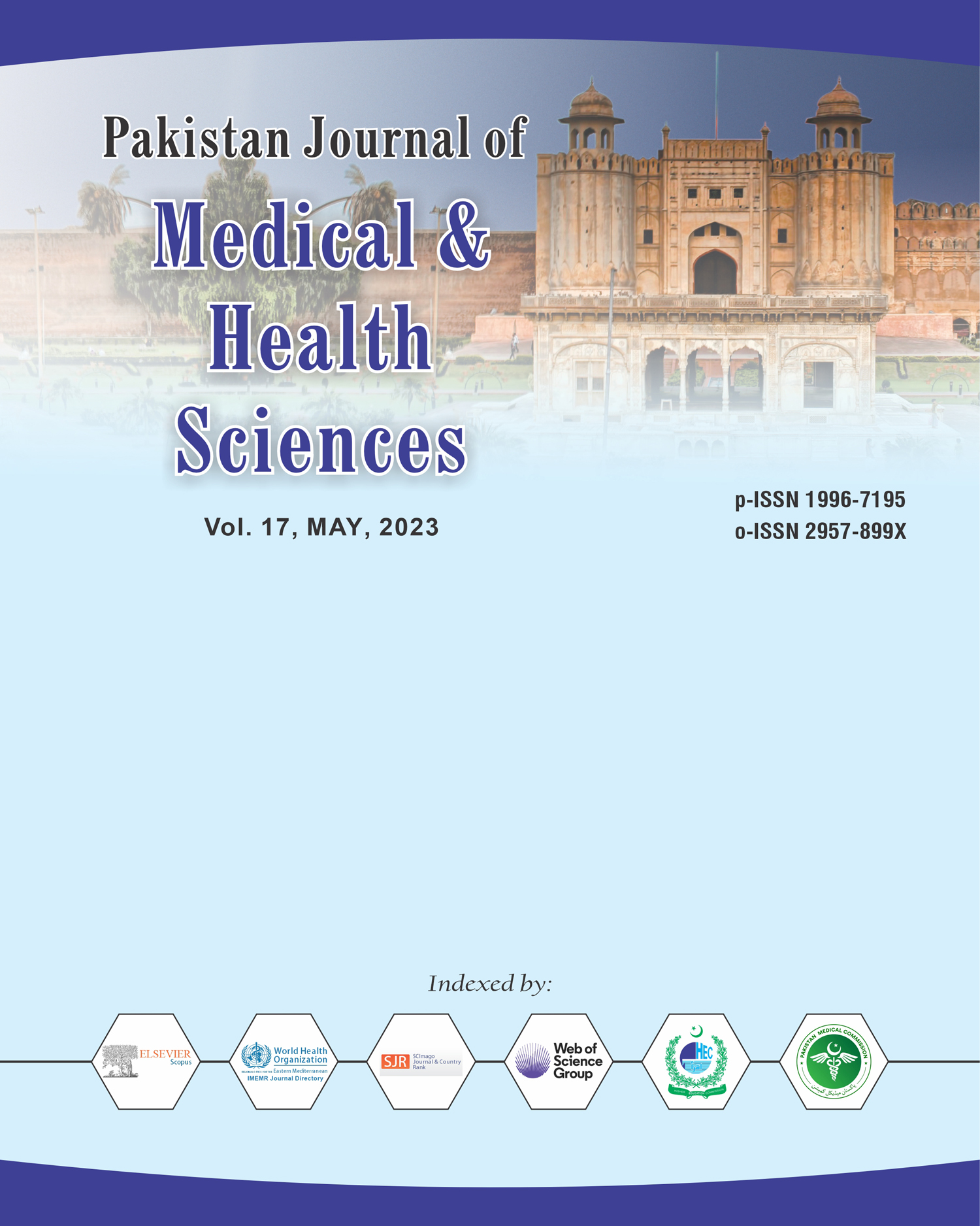Best among Better: Ducto Mucosal Versus Dunking Procedure for Pancreaticojejunal Anastomosis in Whipple Procedure
DOI:
https://doi.org/10.53350/pjmhs2023175701Abstract
Background: Pancreaticojejunal anastomosis is a critical component of the Whipple procedure, with postoperative pancreatic fistula being a major concern.
Objective: This study aims to compare the clinical outcomes of the duct-to-mucosa and dunking techniques in pancreaticojejunal anastomosis following pancreaticoduodenectomy.
Methods: This comparative observational study was conducted at Pir Abdul Qadir Shah Jilani Institute Of Medical Sciences Gambat Sindh during January 2021 to January 2023. A total of 85 patients were added in the study. The primary outcome measure was the incidence of postoperative pancreatic fistula, classified based on the International Study Group of Pancreatic Fistula criteria. The presence of a clinically significant fistula was determined through drain fluid amylase levels, imaging findings, and clinical symptoms.
Results: The incidence of postoperative pancreatic fistula was slightly lower in the duct-to-mucosa group (15%) compared to the dunking group (18%), though the difference was not statistically significant (p=0.52). The dunking group had shorter operative times (290 vs. 320 minutes, p=0.04) and reduced blood loss (380 vs. 400 mL, p=0.06).
Conclusion: It is concluded that both the duct-to-mucosa and dunking techniques are effective for pancreaticojejunal anastomosis, with each method having specific advantages. The duct-to-mucosa technique may be more beneficial for patients with a dilated pancreatic duct, whereas the dunking method is preferable in cases of a soft pancreas.
Keywords: Ducto Mucosal, Dunkin, Pancreaticojejunal, pancreaticoduodenal
Downloads
How to Cite
Issue
Section
License
Copyright (c) 2023 Sirajuddin, Syed Hasnain Abbas, Syeda Munazza Zafar, Sohail Moosa, Hamid Raza Laghari, Muhammad Akram, Shams-ud-Din

This work is licensed under a Creative Commons Attribution 4.0 International License.


